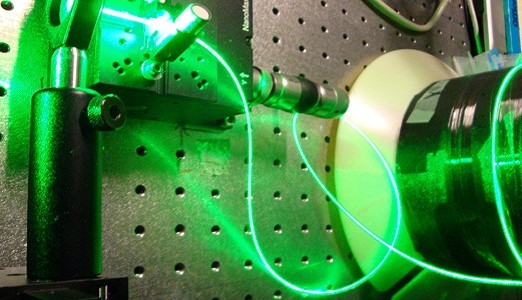For the last 40 years silica - a highly purified version of beach sand - has been used to produce optical fiber. However, with the demand for faster and cheaper data and new functionality there is so much light packed in fiber cable that the silica essentially can’t handle the intensity. At high ...
For the last 40 years silica - a highly purified version of beach sand - has been used to produce optical fiber. However, with the demand for faster and cheaper data and new functionality there is so much light packed in fiber cable that the silica essentially can’t handle the intensity. At high power, the light causes the atoms of the material to vibrate more violently which causes some of the light energy to be converted into sound energy and restricts the ability of the fiber to carry more power. This, in turn, lessens the amount of light that can travel through the fiber and limits the amount of information that can be sent or the power for high-energy laser applications.
Researchers at the Clemson University (South Carolina, USA) therefore are looking for other materials to use for optical fibers, especially one that can be sold commercially. Their goal is to take a robust, affordable, and easily accessible material that can take the brunt of greater intensity and convert that material into a fiber. One such material is sapphire that, according to the scientist, possesses extraordinary properties making it exceptionally valuable for high power lasers. The first results are promising, but commercially accepted manufacturing methods for optical fibers have yet to be adapted to make them compatible with sapphire’s crystalline structure.



Discussion (0 comments)